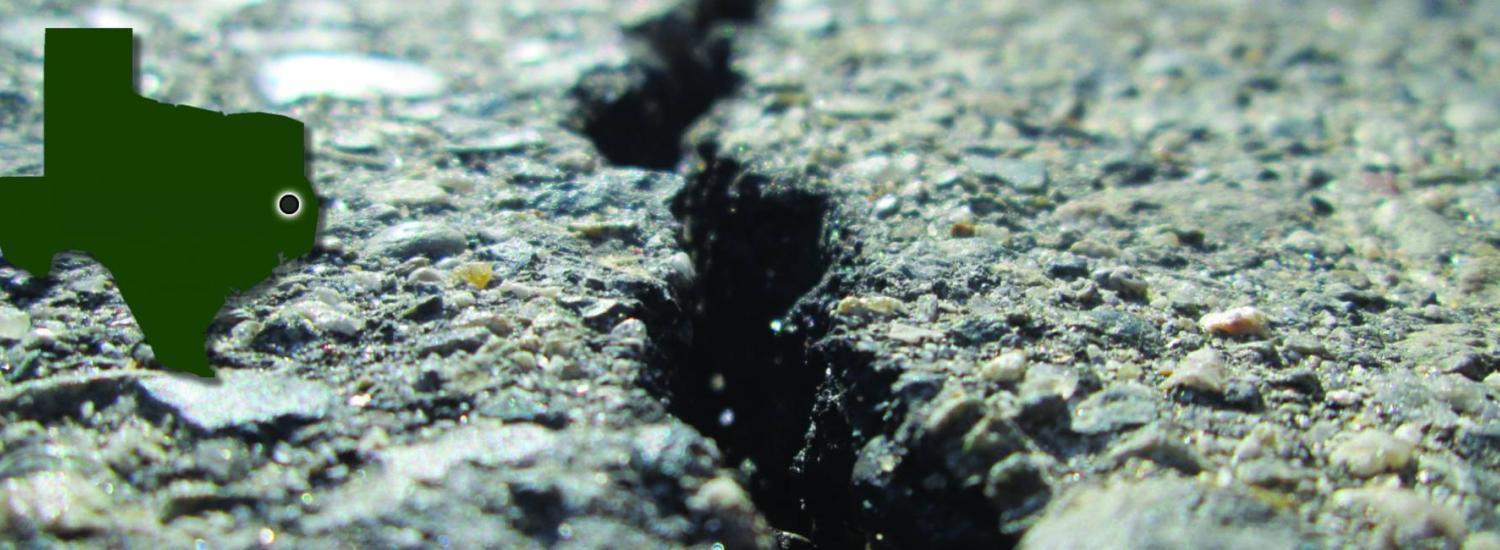Wastewater Injection and Induced Seismicity
Injecting wastewater produced by oil and gas extraction can trigger earthquakes

On May 17, 2012, the city of Timpson, Texas, experienced a magnitude 4.8 earthquake, the largest ever in the region, followed by several more earthquakes over the following 16 months.
While earthquakes can occur as part of a natural process, this part of Texas has not historically had earthquakes, and yet is experiencing them with increased frequency in recent years.
An increase in earthquake activity is occurring not only in Timpson, but in areas of the eastern and central US, areas where unprecedented volumes of wastewater, produced along with oil and gas, are being disposed of, by injection, into deep geological formations.
Manoochehr Shirzaei, assistant professor at ASU’s School of Earth and Space Exploration, is the lead author of a study out today in Science, which provides strong evidence of the link between oil and gas wastewater disposal and earthquakes in Texas.
As a by-product of modern methods of producing oil and gas, large quantities of wastewater (an estimated two billion gallons every day in the US) are brought to the surface. Currently, the only way to dispose of this wastewater is to inject it into rocks lying deep below the surface via wells.
Approximately 180,000 disposal wells are currently in operation in the US, primarily in Texas, California, Oklahoma, and Kansas.
For this study, Shirzaei and co-authors William Ellsworth of Stanford University, Kristy Tiampo of the University of Colorado Boulder, Pablo González of the University of Liverpool (UK), and Michael Manga of UC Berkeley focused on four high-volume wells used for disposing wastewater near the epicenter for the Timpson, Texas earthquake.
Two of the injection wells lie directly above where the earthquake occurred, injecting wastewater at a depth of over one mile. The other two wells injected similar volumes of wastewater but at shallower depths, just over a half-mile below the surface.
The researchers used space-borne Interferometric Synthetic Aperture Radar (InSAR), a remote satellite-based sensing technique, to measure the surface uplift of the area near the wells.
“Monitoring surface deformation using these remote sensing techniques is a proactive approach to managing the hazards associated with fluid injection, and can help in earthquake forecasting,” says Shirzaei. “Our study reports on the first observations of surface uplift associated with wastewater injection.”
InSAR uses radar to measure the change in distance between the satellite and ground surface, producing highly accurate deformation maps of the Earth’s surface. From this remote sensing technique, the team was able to show that injecting water into the wells at high pressure caused ground uplift near the shallower wells.
Satellites measuring surface uplift near the injection wells. Colored circles show pore pressure increase at the location of the earthquake. Injection wells are shown in red with injection depth indicated in blue bars.
The researchers then calculated the strain and pore pressure underneath the wells that resulted in the uplift and, in turn, triggered the earthquakes. Their research found that seismic activity increased, even after water injection rates declined, because pore pressure continued to diffuse throughout the area from earlier injections.
In addition, the data show less seismic activity in denser rock where pore pressure was prevented from disseminating into basement rock, helping to explain why injection can, but does not always, cause earthquakes.
By integrating seismic data, injected water histories, and geological and hydrogeological information with surface deformation observations, the researchers of this study have provided a definitive link between wastewater injection and earthquake activity in Texas. “This work provides important insights into why induced earthquakes occur in some cases and not in others,” says Kristy Tiampo, who is also a Fellow with the University of Colorado Boulder’s Cooperative Institute for Research in Environmental Sciences.
“This research opens new possibilities for the operation of wastewater disposal wells in ways that could reduce earthquake hazards,” states Shirzaei.